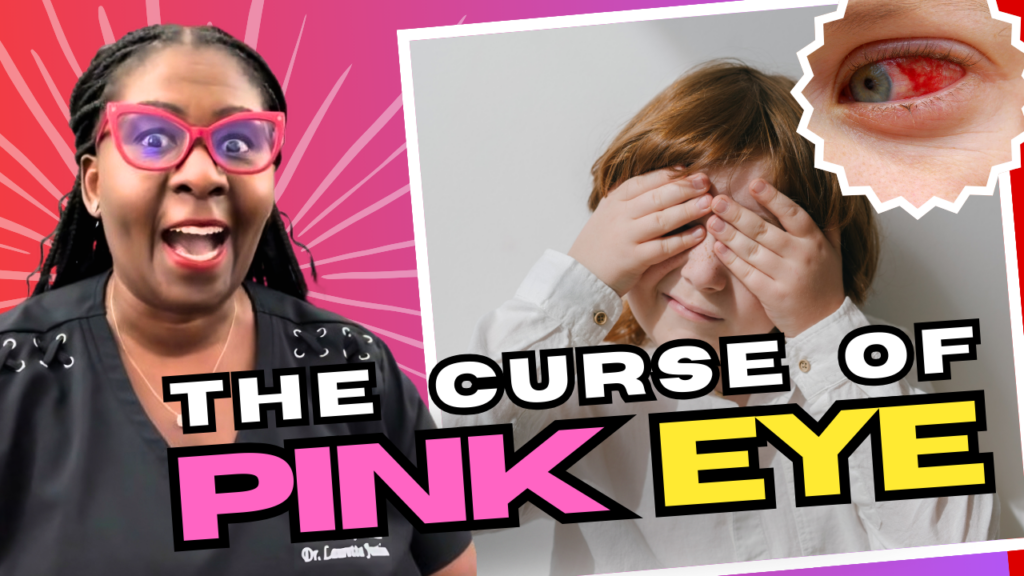The Curse of Pink Eye: Causes, Symptoms, and Prevention

Pink eye, or conjunctivitis, is one of the most common and contagious eye conditions, affecting millions of people annually. While it’s often seen as a minor inconvenience, pink eye can cause significant discomfort and even disrupt your daily routine. Understanding the causes, symptoms, and ways to prevent this condition is crucial to managing and minimizing its impact on your health and your practice as an optometrist.
What is Pink Eye?
Pink eye, also known as conjunctivitis, is the inflammation or infection of the conjunctiva—the transparent membrane that lines your eyelid and covers the white part of your eyeball. When small blood vessels in the conjunctiva become inflamed, they become more visible, giving the eye a pink or red appearance.
While pink eye is generally not serious and doesn’t usually affect vision, it can be extremely contagious and cause significant discomfort.
Causes of Pink Eye
There are several types of conjunctivitis, each with a different cause:
1. Viral Conjunctivitis
The most common type, viral conjunctivitis, is caused by a virus, such as adenovirus or the herpes simplex virus. This type is highly contagious and can spread rapidly, especially in schools and offices.
Research Insight: According to the American Academy of Ophthalmology (AAO), viral conjunctivitis is responsible for 65-90% of cases in adults . The condition often accompanies other upper respiratory infections like the common cold.
2. Bacterial Conjunctivitis
This type is caused by bacteria such as Staphylococcus aureus, Streptococcus pneumoniae, or Haemophilus influenzae. Bacterial pink eye is contagious and is typically spread through direct contact with contaminated hands or objects.
Research Insight: Bacterial conjunctivitis is more common in children, with up to 50% of all cases in young children attributed to bacterial infections .
3. Allergic Conjunctivitis
Allergic conjunctivitis is caused by allergens like pollen, pet dander, or dust mites. It is not contagious but can cause significant irritation and discomfort. Individuals with other allergic conditions, such as hay fever or asthma, are more prone to this type.
4. Chemical Conjunctivitis
Exposure to irritants, such as smoke, chlorine in swimming pools, or even shampoos, can cause conjunctivitis. This type typically resolves once the irritant is removed but can still lead to redness and discomfort.
Symptoms of Pink Eye
Regardless of the cause, the symptoms of conjunctivitis can be similar:
- Redness in the white of the eye or inner eyelid
- Itchy eyes
- A gritty feeling in the eye
- Tearing or watery discharge
- Discharge from the eye that can form a crust overnight (more common in bacterial conjunctivitis)
- Swelling of the conjunctiva and eyelids
In some cases, there may be accompanying symptoms like light sensitivity or blurred vision. These more severe symptoms could indicate a more serious underlying condition and should be evaluated by an eye care professional immediately.
How to Prevent Pink Eye
While pink eye can be highly contagious and annoying, there are effective steps you can take to minimize the risk of infection. Here are some evidence-based tips to keep your eyes healthy:
1. Practice Good Hand Hygiene
The Centers for Disease Control and Prevention (CDC) emphasizes that handwashing is one of the most effective ways to prevent the spread of viral and bacterial conjunctivitis. Use soap and water, and avoid touching your eyes with dirty hands.
Research Insight: The CDC found that hand hygiene practices could reduce respiratory and diarrheal illnesses (including conjunctivitis) by 31% .
2. Avoid Sharing Personal Items
Don’t share towels, pillows, or cosmetics like makeup and eyeliner. Pink eye can easily be spread through contaminated surfaces.
3. Disinfect Surfaces
Regularly clean surfaces like countertops, doorknobs, and bathroom fixtures to reduce the risk of contamination.
4. Limit Contact Lens Wear
For those who wear contact lenses, ensure proper lens hygiene, and avoid wearing lenses during an active infection. According to the American Optometric Association (AOA), improper lens care can increase the risk of developing pink eye .
5. Manage Allergies
If you suffer from allergic conjunctivitis, take steps to manage your allergies, such as using air purifiers and allergy medications. This will help reduce irritation and discomfort.
Treatment Options for Pink Eye
In most cases, conjunctivitis will resolve on its own within a week or two. However, treatments may help alleviate symptoms or speed recovery:
- Viral Conjunctivitis: There is no specific treatment, but cold compresses and artificial tears can help relieve symptoms. In severe cases, antiviral medication may be prescribed.
- Bacterial Conjunctivitis: Antibiotic eye drops or ointments may be recommended to shorten the infection’s duration and prevent further spread.
- Allergic Conjunctivitis: Over-the-counter antihistamine eye drops or prescription medication can help manage symptoms.
- Chemical Conjunctivitis: Immediate irrigation of the eyes and removal of the irritant is necessary, followed by medical evaluation.
Checkout Lauretta’s latest video:
Pink Eye in Optometry Practice: Why It Matters
For women optometrists, understanding and managing pink eye in patients is essential. Pink eye is often a significant disruptor in a clinical setting because of its contagious nature.
Being able to effectively diagnose and offer prevention tips to patients can help reduce the spread and ensure patient satisfaction. Moreover, offering proactive educational materials on preventing pink eye to patients and communities can position your practice as a trusted health resource.
Conclusion
Pink eye, while common, can be managed and even prevented with proper care and hygiene practices. As optometrists, your role in educating patients on best practices for prevention and early treatment is critical in maintaining public eye health.
Are you interested in learning more about managing and preventing eye conditions like conjunctivitis? Join the Optometry Divas Community for access to a wealth of resources, ongoing education, and a network of women ODs committed to empowering one another to succeed.
Click HERE to become part of a community dedicated to helping you thrive as an eye care professional!
References:
- American Academy of Ophthalmology (AAO). “Viral Conjunctivitis (Pink Eye).” Available at: AAO Website.
- Centers for Disease Control and Prevention (CDC). “Hand Hygiene in Healthcare Settings.” Available at: CDC Website.
- American Optometric Association (AOA). “Contact Lens Hygiene.” Available at: AOA Website
*Disclaimer: The information in this video is not intended nor implied to be a substitute for professional medical advice, diagnosis, or treatment. All content, including text, graphics, images, and information, contained in this video is for general information purposes only and does not replace a consultation with your own doctor/health professional.*





